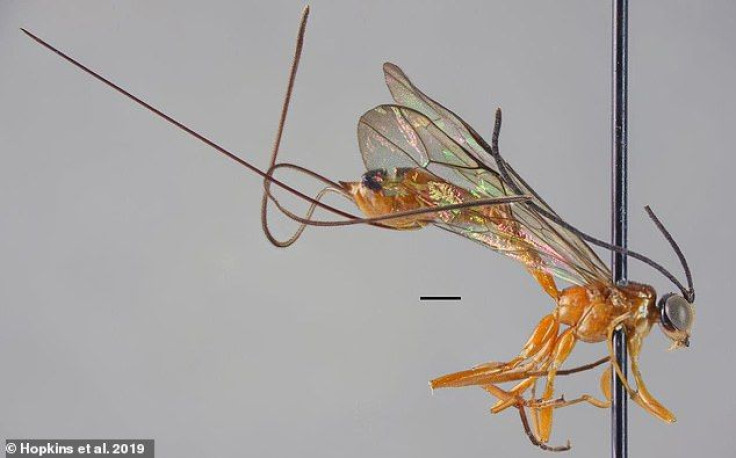Newly-Discovered Giant Parasitic Wasps Lay Eggs Inside Baby Insects Using 'Sex Sting'
The most prominent species can grow up to 4-inches long, bigger than a toddler's hand.
A newly-discovered bug in Africa that's ten times larger than the common wasp is the stuff of nightmares. Even worse, it lays it's eggs inside unsuspecting larva of other insects and emerges in a horrible hatching ritual.
The parasitic wasp, two new species of the Afrotropical rhyssine, in Uganda, was recently identified by a band of scientists led by Dr. John Hopkins, from the University of Turku in Finland.
The most prominent species can grow up to 4-inches long, bigger than a toddler's hand – the species inhabit tropical regions across Africa.
Hopkins named one of the new species, Epirhyssa quagga, taking its color from "that of a zebra," while the other is called Epirhyssa johanna as an homage to the scientist's wife.
During their research in Uganda's Kibale National Park, Hopkin's team was able to collect 456 rhyssine wasps. Like most parasites, the gigantic wasp lays its eggs in unsuspecting insects, favoring the larvae of beetles and other wasps living in rotting wood.

Using its long trademark stinger, the wasp drills through the wood and stabs the unwilling host. The eggs lay deep inside the flesh, where its young hatch in a gruesome manner in a matter of days.
Fortunately, the new species is not believed to lay its eggs on larger animals; for now, humans are out of its stingy wrath. The discovery is a milestone for entomologists; everything scientists knew about the Afrotropical rhyssine was only based on 30 specimens.
Hopkins noted that tropical rhyssines are still very new to the scientific community. He said that the largest tropical species, the Epirhyssa overlaeti, was only cataloged two times.
He added that only two females were known before, one collected in the 1930s in Congo, while the other one in the 1980s in Cameroon. Dr. Hopkins and his team's research was published in the journal ZooKeys.
© Copyright IBTimes 2024. All rights reserved.











